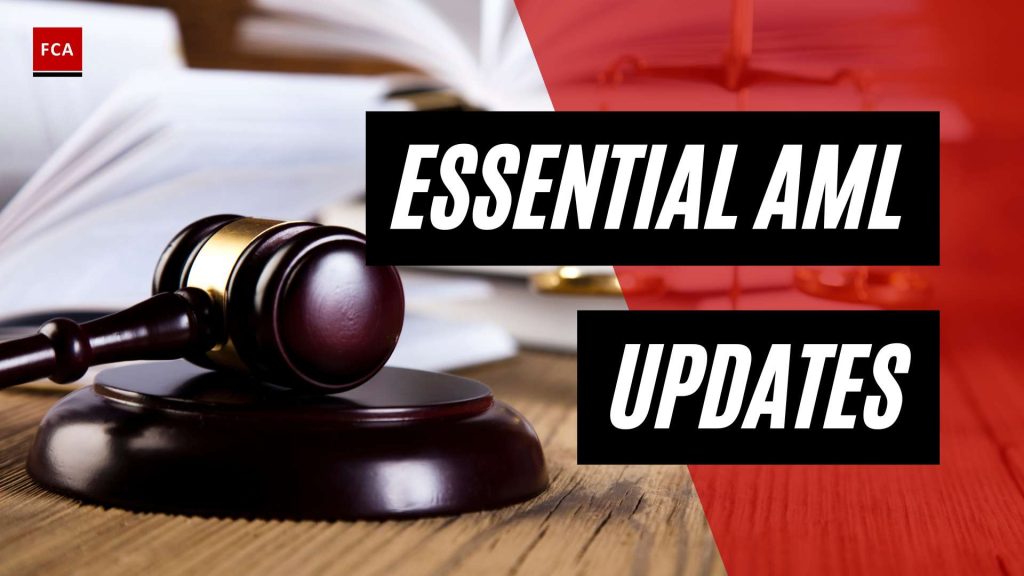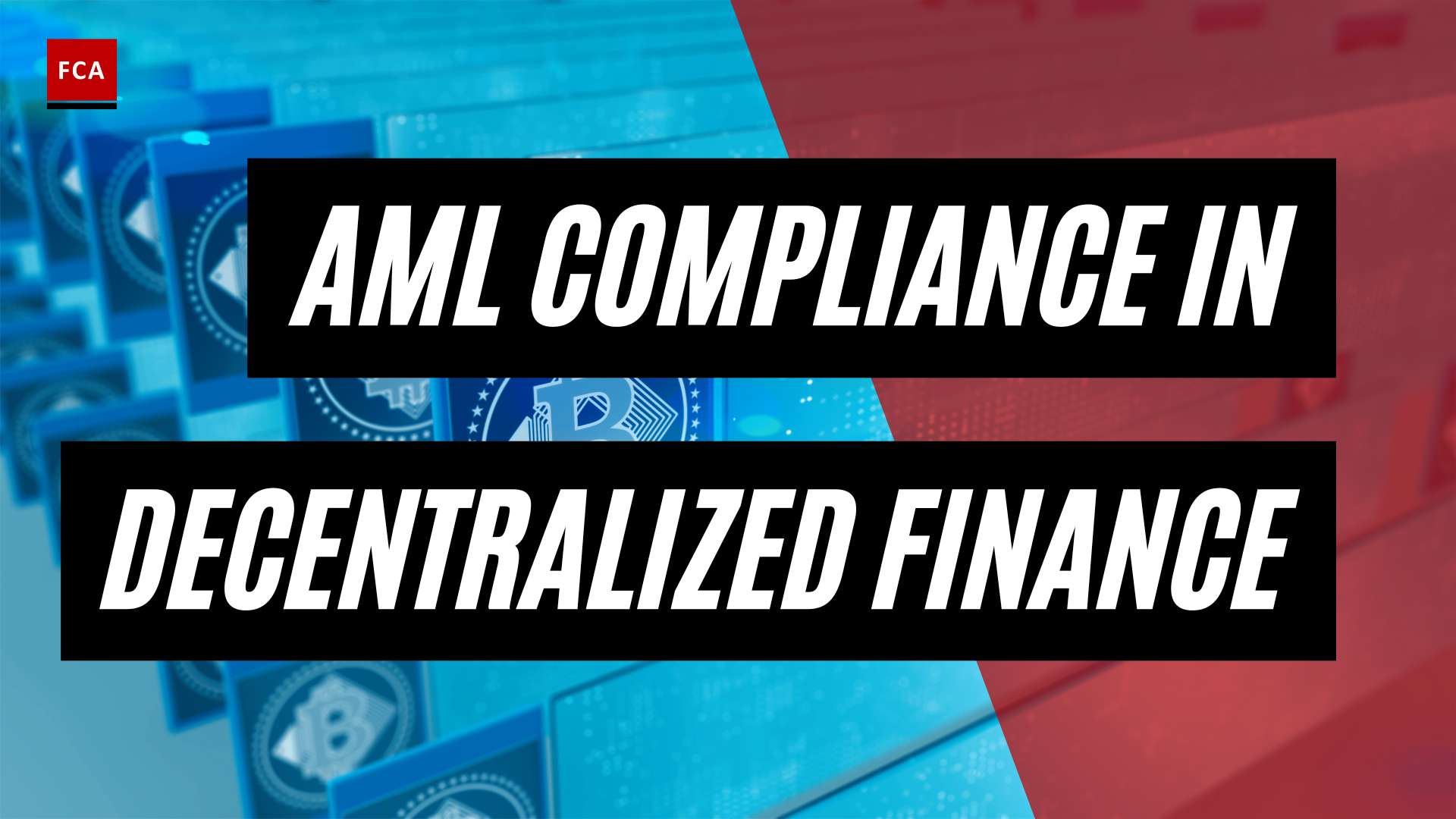Overview of AML Regulatory Bodies
In the ever-evolving landscape of anti-money laundering (AML) regulations, several global regulatory bodies play a crucial role in setting standards and ensuring compliance. These regulatory bodies oversee financial institutions and implement measures to prevent money laundering and terrorist financing. Let’s explore some of the key AML regulatory bodies.
Financial Action Task Force (FATF)
The Financial Action Task Force (FATF) is an intergovernmental organization established to combat money laundering and terrorist financing on a global scale. It sets international standards and best practices for AML and counter-terrorist financing (CTF) measures. The FATF regularly conducts mutual evaluations of member countries to assess their compliance with AML regulations.
Financial Conduct Authority (FCA)
The Financial Conduct Authority (FCA) is the regulatory body responsible for overseeing financial markets and firms in the United Kingdom. It aims to protect consumers, enhance market integrity, and promote competition. The FCA enforces AML regulations and works to ensure that financial institutions adhere to AML and CTF requirements.
Hong Kong Monetary Authority (HKMA)
The Hong Kong Monetary Authority (HKMA) is the central banking institution in Hong Kong. It is responsible for maintaining the stability and integrity of the financial system in Hong Kong. The HKMA has implemented stringent AML and CTF measures to combat money laundering and terrorism financing, and financial institutions in Hong Kong must comply with these regulations.
Monetary Authority of Singapore (MAS)
The Monetary Authority of Singapore (MAS) serves as the central bank of Singapore and is responsible for regulating and supervising the country’s financial sector. The MAS has implemented robust AML measures to combat money laundering and financing of terrorism. Financial institutions in Singapore are required to comply with AML and CTF regulations, and the MAS imposes significant fines on those that fail to meet these requirements.
Financial Crimes Enforcement Network (FinCEN)
The Financial Crimes Enforcement Network (FinCEN) is a bureau of the United States Department of the Treasury. FinCEN collects, analyzes, and disseminates information to combat money laundering and terrorist financing. It enforces the Bank Secrecy Act (BSA), which requires financial institutions to report suspicious transactions and maintain proper records. FinCEN plays a critical role in ensuring compliance with AML regulations in the United States.
These AML regulatory bodies, along with many others worldwide, work collaboratively to establish and enforce AML regulations. Their efforts are aimed at safeguarding the integrity of the financial system and protecting against illicit financial activities. Financial institutions and professionals in the compliance, risk management, and anti-money laundering sectors must stay informed about the updates and guidelines provided by these regulatory bodies to ensure compliance with AML regulations.
AML Regulatory Updates in Europe
In the ever-evolving landscape of anti-money laundering (AML) regulation, Europe has implemented several important updates to strengthen financial security and combat money laundering. Let’s explore two key directives, the Fifth Anti-Money Laundering Directive (5AMLD) and the Sixth Anti-Money Laundering Directive (6AMLD), as well as the impact of these changes in the European Union.
Fifth Anti-Money Laundering Directive (5AMLD)
The European Union released the Fifth Anti-Money Laundering Directive (5AMLD) on July 9th, 2018, and it became effective on January 10, 2020 (Flagright). The 5AMLD introduced several updates to the existing AML framework to address emerging risks and enhance transparency. Some key provisions of the 5AMLD include:
- Expanding the scope of regulated entities to include virtual currency exchanges and custodian wallet providers, bringing them under AML regulation.
- Strengthening customer due diligence (CDD) requirements, including enhanced scrutiny for high-risk third countries.
- Enhancing the powers of financial intelligence units (FIUs) to access information and cooperate effectively.
- Introducing beneficial ownership registers to ensure greater transparency and prevent the misuse of corporate structures.
Sixth Anti-Money Laundering Directive (6AMLD)
Building upon the foundation laid by the 5AMLD, the European Union issued the Sixth Anti-Money Laundering Directive (6AMLD) towards the end of 2018, which took effect in June 2021 (Flagright). The 6AMLD further strengthens AML measures by placing a greater emphasis on enforcement and harmonization across member states. Key aspects of the 6AMLD include:
- Expanding the definition of money laundering offenses and imposing stricter penalties for offenders.
- Introducing criminal liability for legal persons, making it easier to hold entities accountable for money laundering activities.
- Enhancing the powers of authorities to investigate and seize assets related to money laundering.
- Improving cross-border cooperation and information sharing among member states to combat transnational money laundering.
Impact of AML Changes in the European Union
Despite updates and improvements in AML laws in the European Union, the fight against money laundering remains a significant challenge. According to estimates, money laundering activities in the region reach up to €1.87 trillion annually, with the rise of cryptocurrencies considered a contributing factor (A Data Pro).
However, the regulatory updates have had positive effects on financial security in the European Union. Countries like Finland, for example, have among the lowest money laundering offenses globally, attributed to stringent customer due diligence laws and enhanced monitoring practices (A Data Pro). These changes demonstrate the commitment of European regulatory bodies to combat money laundering and protect the integrity of the financial system.
By implementing the 5AMLD and 6AMLD, the European Union aims to create a robust AML regulatory framework that promotes transparency, cooperation, and accountability. The continuous evolution of AML regulations reflects the ongoing efforts to stay ahead of evolving money laundering techniques and emerging risks. Compliance professionals and financial institutions must stay informed and adapt to these regulatory updates to ensure effective AML compliance and contribute to a safer financial environment.
AML Regulatory Updates in the United States
When it comes to anti-money laundering (AML) regulation in the United States, several key entities and regulations play a crucial role. This section will focus on the Bank Secrecy Act (BSA), the Financial Crimes Enforcement Network (FinCEN), and the penalties for non-compliance.
Bank Secrecy Act (BSA)
The Bank Secrecy Act (BSA) is the primary anti-money laundering regulation in the United States. Enacted in 1970, the BSA aims to identify the source, volume, and movement of currency related to illicit activities, including money laundering. The BSA imposes various regulatory requirements on financial institutions, such as banks, credit unions, and money services businesses, to prevent and detect money laundering and other financial crimes.
Under the BSA, financial institutions must establish robust AML programs, including customer identification procedures, ongoing monitoring of customer transactions, and reporting of suspicious activities. These measures help ensure that financial institutions are actively involved in combating money laundering and terrorist financing.
Financial Crimes Enforcement Network (FinCEN)
The Financial Crimes Enforcement Network (FinCEN) is the regulatory body responsible for enforcing the Bank Secrecy Act (BSA) in the United States. FinCEN is a bureau of the U.S. Department of the Treasury and serves as a financial intelligence unit (FIU). It collects, analyzes, and disseminates financial intelligence to support law enforcement agencies in combating money laundering, terrorist financing, and other financial crimes.
FinCEN plays a vital role in AML regulatory oversight and works closely with financial institutions to ensure compliance with AML laws and regulations. It provides guidance, issues advisories, and enforces penalties for non-compliance. Financial institutions are required to report certain transactions and activities to FinCEN, including suspicious activity reports (SARs) and currency transaction reports (CTRs).
Penalties for Non-Compliance
Compliance with the Bank Secrecy Act (BSA) and FinCEN regulations is crucial for financial institutions to avoid severe penalties. Failure to comply with the BSA can result in prosecution under the U.S. criminal code, with potential penalties including imprisonment and fines of up to $250,000. Additionally, financial institutions may face civil penalties, regulatory enforcement actions, reputational damage, and loss of customer trust if found in violation of AML regulations.
To ensure compliance and mitigate the risk of non-compliance, financial institutions must maintain robust AML programs, conduct regular risk assessments, and stay updated on AML regulatory developments. Implementing effective AML controls, training employees on AML requirements, and leveraging advanced technologies for AML compliance can help financial institutions meet their regulatory obligations.
By understanding the Bank Secrecy Act (BSA), the role of the Financial Crimes Enforcement Network (FinCEN), and the potential penalties for non-compliance, financial institutions can stay ahead of AML regulatory updates in the United States and contribute to the global fight against money laundering and financial crimes.
AML Regulatory Updates in Canada
In Canada, the Financial Transactions and Reports Analysis Centre of Canada (FINTRAC) plays a pivotal role in ensuring the identification, prevention, and deterrence of money laundering, terrorist financing, and other security risks. FINTRAC works towards detecting and punishing acts of money laundering and terrorism financing (Flagright).
One of the recent updates in the AML regulatory landscape in Canada involves proposed amendments to the Anti-Money Laundering and Anti-Terrorist Financing (AML/ATF) Regime. These amendments aim to enhance the effectiveness of the AML/ATF Regime and introduce new obligations for certain sectors.
Financial Transactions and Reports Analysis Centre of Canada (FINTRAC)
FINTRAC is the regulatory body responsible for assisting in the identification, prevention, and deterrence of money laundering, terrorist financing, and other security risks in Canada. It plays a crucial role in detecting and punishing acts of money laundering and terrorism financing. FINTRAC collects, analyzes, and discloses financial intelligence to support law enforcement agencies in their efforts to combat money laundering and terrorist financing activities.
Proposed Amendments to AMLATFA Regulations
The Department of Finance in Canada is actively advancing regulatory initiatives to improve the effectiveness of the AML/ATF Regime. These proposed amendments aim to address various aspects of the AML/ATF framework, including:
-
Long-term funding solution for FINTRAC: The proposed amendments seek to implement a long-term funding solution for FINTRAC, ensuring that the regulatory body has the necessary resources to fulfill its mandate effectively.
-
AML/ATF obligations on the armoured car sector: The amendments aim to impose AML/ATF obligations on the armoured car sector in recognition of its cash-intensive clientele and the inherent risks associated with the transportation of currency and negotiable instruments.
-
AML/ATF obligations on mortgage lending entities: The proposed amendments extend AML/ATF obligations to include mortgage lending entities such as brokers, lenders, and administrators. This expansion is intended to mitigate the risks of these entities being misused for money laundering and terrorist financing.
-
Increased penalties for cross-border currency reporting: The amendments aim to increase penalties for non-compliance with cross-border currency reporting requirements. This emphasizes the importance of accurate reporting and reinforces the regulatory framework’s effectiveness.
-
Streamlined administrative monetary penalties (AMPs) process: The proposed amendments streamline the requirements for sending AMPs documents to reporting entities. This process enhancement aims to improve efficiency and ensure timely communication of penalties.
-
Enhanced money services businesses (MSB) registration framework: The amendments aim to enhance the MSB registration framework, which governs businesses that offer money transfer and foreign exchange services. These enhancements will further strengthen the AML/ATF measures applicable to MSBs.
By introducing these proposed amendments, Canada aims to enhance its AML/ATF regime to better address the evolving threats of money laundering and terrorist financing. The amendments will help ensure the effectiveness of regulatory oversight and contribute to a more robust AML/ATF framework in Canada.
To stay up to date with the latest regulatory developments in Canada and globally, professionals working in compliance, risk management, anti-money laundering, and anti-financial crime should closely monitor updates from regulatory bodies such as FINTRAC and other relevant authorities.
Technology and AML Compliance
As the fight against financial crimes continues to evolve, technology plays a crucial role in enhancing Anti-Money Laundering (AML) compliance efforts. Innovations such as big data, artificial intelligence (AI), machine learning, and digital identification solutions are transforming the way financial institutions approach AML compliance and the detection of money laundering activities.
Role of Technology in AML Compliance
Technology has revolutionized the AML landscape, enabling financial institutions to adopt a more effective, flexible, and comprehensive approach in identifying anomalies and patterns associated with money laundering activities. By leveraging advanced technologies, financial institutions can sift through vast amounts of data, including customer transactions, to detect suspicious activities and mitigate potential risks. The integration of technology streamlines the compliance process, allowing for more efficient identification and reporting of suspicious transactions.
Big Data and Artificial Intelligence (AI)
Big data analytics and AI are powerful tools in the fight against money laundering. These technologies enable financial institutions to analyze large volumes of structured and unstructured data, including transactional data, customer profiles, and external data sources, to identify patterns and detect potential money laundering activities. By leveraging AI algorithms, financial institutions can automate the detection of suspicious transactions, minimizing the reliance on manual processes and improving the efficiency and accuracy of AML compliance efforts.
Digital Identification Solutions
Digital identification solutions, such as electronic Know Your Customer (eKYC), are gaining prominence in AML compliance. These solutions leverage digital technologies to verify the identity of customers remotely, reducing the need for physical documentation and streamlining the customer due diligence process. Countries like India have embraced unique identification numbers to facilitate efficient and effective customer identification and due diligence procedures.
Machine Learning and Customer Due Diligence (CDD)
Machine learning algorithms are being employed in the Customer Due Diligence (CDD) process to enhance the identification of new money laundering or terrorist financing risks. Systemically Important Financial Institutions (SIFIs) in Brazil, for example, utilize machine learning to more effectively, rapidly, and accurately identify potential risks, ensuring a robust CDD process.
Impact of Technology on Money Laundering Activities
While technology advancements have significantly improved AML compliance, they have also contributed to an increase in money laundering activities. Criminals exploit digital platforms, bitcoin exchanges, and faster payment systems to launder illicit funds, posing significant challenges to regulatory authorities and financial institutions. The impact of technology on money laundering activities highlights the need for continuous innovation and collaborative efforts to stay ahead of evolving financial crimes.
By leveraging technology, financial institutions can strengthen their AML compliance efforts, detect suspicious activities more efficiently, and mitigate the risks associated with money laundering. However, it is crucial for regulators and financial institutions to adapt and evolve their strategies to counter the ever-changing landscape of financial crimes.
Case Studies and International Collaboration
In the fight against money laundering, case studies and international collaboration play a crucial role in understanding the impact of illicit financial activities and developing effective measures to combat them. Let’s explore some notable examples of case studies and international collaboration efforts in the field of anti-money laundering (AML).
IMF Anti-Money Laundering Technical Assistance Project
The International Monetary Fund (IMF) has been at the forefront of supporting countries in strengthening their AML frameworks. In a recent project, the IMF partnered with eight Nordic and Baltic countries, including Denmark, Estonia, Finland, Iceland, Latvia, Lithuania, Norway, and Sweden. This collaboration aimed to provide technical assistance in anti-money laundering efforts and emphasize the need for countries to work together to combat money laundering (IMF Blog).
Through this project, the IMF utilized machine learning technologies and data analysis to scrutinize financial movements and identify potential macro-critical money laundering scenarios. By integrating these technologies into their assessments, the IMF contributed to the annual health checks of member economies and the Financial Sector Assessment Program (IMF Blog).
The Impact of Money Laundering on Financial Sector Stability
An examination of regional money laundering cases revealed the far-reaching consequences of money laundering on the stability of the financial sector. Banks facing financial integrity concerns experienced significant repercussions, including sharp drops in stock prices, increased perceived credit risks, declines in deposits affecting liquidity, equity price declines, and higher costs for insuring against corporate default. These findings highlight the significant impact of money laundering shocks at both individual and regional bank levels (IMF Blog).
Understanding the link between money laundering and financial sector stability is crucial for regulators and policymakers as they develop strategies to mitigate the risks associated with illicit financial activities. By comprehending the potential consequences of money laundering on the broader financial system, authorities can strengthen their efforts to prevent and combat these illicit activities.
Supervisory Frameworks and International Collaboration
Supervisory frameworks play a vital role in ensuring effective AML oversight and enforcement. In the aforementioned IMF project, an examination of supervisory frameworks within the Nordic-Baltic region led to recommendations at both country and regional levels. The study emphasized the importance of national regulators overseeing banks’ anti-money laundering efforts and the necessity for stronger international collaboration in supervisory mechanisms (IMF Blog).
International collaboration is essential in addressing the challenges posed by money laundering. Regulators are advised to monitor newer entrants to international finance, such as crypto asset service providers, with risk-adjusted scrutiny. This highlights the importance of cross-border cooperation in handling risks associated with these providers and strengthening international collaboration to effectively combat money laundering (IMF Blog).
By conducting case studies and fostering international collaboration, authorities can gain valuable insights into the evolving landscape of money laundering and enhance their regulatory frameworks accordingly. These efforts contribute to the development of robust AML systems worldwide, aiming to safeguard the integrity of the global financial system.
Notable AML Regulatory Bodies
Several regulatory bodies play a crucial role in the global landscape of anti-money laundering (AML) compliance. These organizations have been established to combat money laundering, terrorist financing, and other financial crimes. Let’s explore some of the notable AML regulatory bodies.
Financial Action Task Force (FATF)
The Financial Action Task Force (FATF) is an intergovernmental organization that sets global standards and promotes effective implementation of legal, regulatory, and operational measures to combat money laundering, terrorist financing, and other related threats. It establishes guidelines and recommendations that countries and financial institutions should adhere to in order to mitigate the risks associated with money laundering and terrorist financing.
Financial Conduct Authority (FCA)
In the United Kingdom, the Financial Conduct Authority (FCA) is the regulatory body responsible for overseeing financial markets and ensuring the integrity of the financial system. The FCA regulates and supervises financial institutions to protect consumers, enhance market integrity, and promote competition. It plays a crucial role in enforcing AML regulations and ensuring compliance within the financial sector.
Hong Kong Monetary Authority (HKMA)
The Hong Kong Monetary Authority (HKMA) is the central banking institution responsible for maintaining monetary and banking stability in Hong Kong. The HKMA is actively involved in combating money laundering and terrorist financing by establishing policies and guidelines for financial institutions operating within Hong Kong. Financial institutions in Hong Kong are required to comply with AML and counter-terrorism financing (CTF) regulations set forth by the HKMA.
Monetary Authority of Singapore (MAS)
The Monetary Authority of Singapore (MAS) is Singapore’s central bank and financial regulatory authority. It oversees the financial industry in Singapore and is responsible for ensuring the stability and integrity of the financial system. MAS has implemented stringent AML regulations and enforces compliance to prevent money laundering and terrorist financing activities. Financial institutions operating in Singapore are required to comply with MAS regulations to maintain the highest standards of integrity and security.
Financial Crimes Enforcement Network (FinCEN)
The Financial Crimes Enforcement Network (FinCEN) is a bureau of the United States Department of the Treasury. It plays a crucial role in combating money laundering and terrorist financing by collecting, analyzing, and disseminating financial intelligence. FinCEN enforces the Bank Secrecy Act (BSA), which requires financial institutions to maintain proper records, report suspicious transactions, and implement effective AML programs. FinCEN’s work is essential for ensuring the integrity of the U.S. financial system.
These notable AML regulatory bodies work diligently to establish and enforce regulations that mitigate the risks associated with money laundering, terrorist financing, and other financial crimes. Financial institutions and individuals operating within the jurisdictions of these regulatory bodies must comply with the prescribed AML regulations to uphold the integrity and security of the global financial system.








